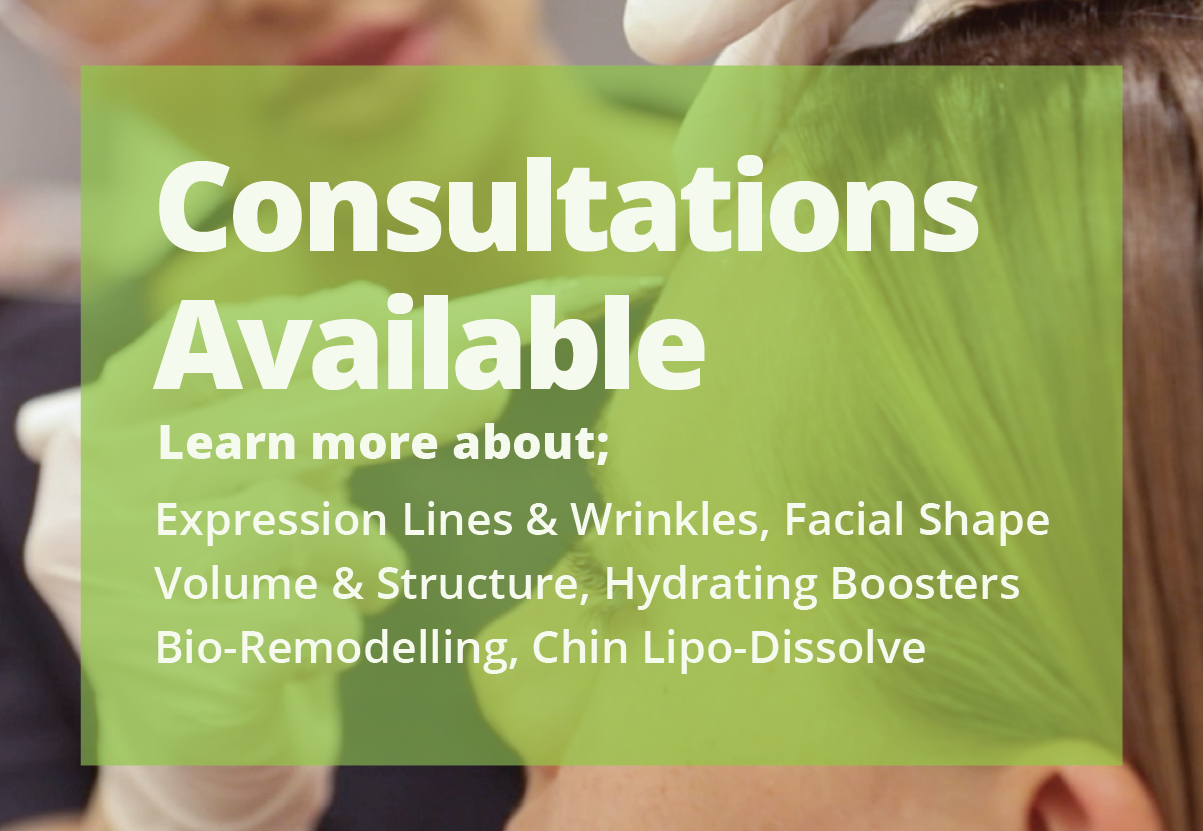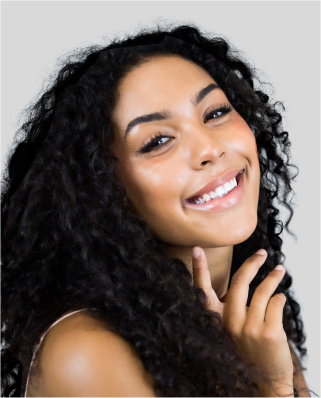Cosmetic Injectables | Dermal Filler | Lip Fillers
Get in touch with us
Why Lip Fillers are just the NEW norm, Express your lips & put with Australia’s Best Laser Clinic & Cosmetic Clinic.
We all want what we don’t have & there is NOTHING wrong with that, confidence is a cure to wellness and our inner & outer beauty Look – Feel – Be what you deserve! Paulina Saliba CEO of Results Laser Clinic
Do you feel like your lips just don’t grow? You’re not alone! Millions of people around the world share this same sentiment. But what’s the reason behind it? And more importantly, what can be done about it? In this article, we will explore the science behind lip growth and why so many people seem to be affected by it. We’ll also discuss some of the most popular natural and cosmetic treatments available today that can help improve lip size and contour. So if you’re looking for ways to achieve fuller, more voluptuous lips, read on!
Why are lips small?
Fuller lips have always been associated with beauty and a healthy look, so it is no wonder that many people want to achieve this look by any means necessary, even if that means going under the knife. However, fuller lips are not just a cosmetic trend, they are also a natural way to keep your lips healthy. When lips are fuller, they are better able to seal in moisture and protect against environmental irritants. So, in addition to looking good, fuller lips also have a number of important health benefits. Of course, not everyone is born with fuller lips, but there are a number of ways to achieve this look by taking care and of course cosmetics. Let’s first look at how you can care for yourself and keep your lips looking fabulous and full of life!
How sexy lips stay sexy – In 4 easy steps!
- Exfoliate – it is beneficial to exfoliate your lips regularly in order to remove dead skin cells and keep them looking healthy. There are many ways to exfoliate your lips, including using a lip scrub or a toothbrush. However, you should be careful not to over-exfoliate as this can damage the delicate skin on your lips. If you do decide to exfoliate your lips, be sure to follow up with a nourishing lip balm to keep them hydrated.
- Moisture – Moisturising your lips is extremely important in order to keep them healthy and looking fuller. Just like the skin on the rest of your body, your lips are susceptible to becoming dry, chapped, and cracked. In order to prevent this from happening, it’s important to regularly moisturise your lips with a lip balm or chapstick.
- Stay hydrated – When it comes to fuller, healthier lips, one of the most important things you can do is to make sure you stay hydrated. Drinking plenty of fluids helps to keep your lips plump and prevents them from drying out and cracking.
- Suncream – Wearing sunscreen is important to protect your skin from the sun’s harmful ultraviolet (UV) rays. But don’t forget about your lips! They are also susceptible to sun damage, which can lead to dryness, wrinkles, and even cancer. Fortunately, there are a number of lipsticks and balms on the market that contain SPF. For the best protection, look for a fuller that has an SPF of at least 15. Apply it generously to your lips before heading outdoors.
Now let’s talk about cosmetics and how they can help you!
What are Dermal Fillers?
Cosmetic Dermal Fillers are a safe and effective way to bring back your skin’s lost hydration. With natural occurring sugars found in our bodies called hyaluronic acid (HA), this non-invasive treatment will help you look young again with instant results! The best part? It’s painless because we use tiny incisions that allow for quick healing so there is no downtime whatsoever after having these cosmetic procedures done on yourself or someone else who may need them as well.
What is lip enhancement?
Lips are one of the most important features on your face because they convey mood, attitude and personality. Turn up their volume with Lip Enhancements; bring back lost lip volume using Cosmetic Dermal Fillers that give you a more youthful look without surgery! With natural ingredients like hyaluronic acid (HA), this treatment has long-lasting effects for safe results at an affordable price.
Common Mistakes Made with Cosmetic Injectables?
Would you trust a stranger in your backyard to give you facial fillers, lip fillers & dermal fillers? NO, you wouldn’t we strongly recommend that you avoid using backyard clinics and use a qualified clinic with qualified nurses, the larger the clinic the more experiences under their belt in return the better outcome it is for you, injectables can go terribly wrong so ensure you do your research prior says Paulina Saliba the CEO & Founder of Results Laser Clinic.
Why Results Laser & Cosmetic Clinic?
With high demand and an ever-growing need for inner confidence, our clinics are not just sales funnels.
Our clinics have a reputation to provide women’s & men’s beauty treatments that enhance your features remove your unwanted hair & boost confidence for the wellness your trying to achieve.
The Vulnerable In Ageing?
Anti-ageing is a preventative way to help keep you looking & feelings younger the saying goes the younger you look the younger you feel, Results Laser Clinic are experts in Anti Ageing & Anti Ageing Treatments, with a renowned facility in Anti Ageing & Ageing Treatments, our specialists can help navigate the way in age prevention & Anti-Ageing Treatments at a local clinic near you, we have a clinic in almost every major shopping centre in Australia for your convenience.
How can Results Laser Clinic help?
We are Australia’s most trusted cosmetics clinic. Our CEO and Founder Paulina pioneered Results Laser Clinic in 2004, being one of the very first companies to offer the most advanced laser & skin technologies in Australia. Results Laser Clinics is one of Australia’s most trusted clinics and has remained this way for over 15 years.
We know there are many options for skin care and beauty treatments out in the market today, but we want you to look your best. Our Cosmetic Injectable Range is a premium way that men or women can feel youthful while also having full confidence in themselves – all without plastic surgery!
We have an anti-wrinkle treatment called Dermal Fillers which comes from naturally occurring sugars found within our body called Hyaluronic Acid (HA). It’s safe & easy application means no pain during this process and is made to last to make your lips look full of life! Book a consultation online using your Results Online account or contact us at Results Laser Clinic today on 02 7809 8898.
Skin Care Glossary
Get in touch with us
A Skin Care glossary of skin terms to help recognise your skin priorities and concerns. Use the Skin care glossary to help you understand some of the words on our blogs or website.
Acne: Localised inflammation of the skin as a result of hyperactive sebaceous glands at the base of the hair follicle.
Acne Rosacea: A skin disorder which results from chronic inflammataion of the cheeks, nose, chin, forehead, and/or eyelids. Often associated with increased redness or acne-like eruptions in these locations of the face.
Acne Vulgaris: Acne resulting from the bacterial infection of cysts deep within the skin. Without treatment this condition may result in scarring.
Age Spots: Brown spots found on the skin which are visible evidence of accumulated long term sun damage. Also called “liver spots.”
Alcohols: Alcohols may be drying or lubricating to the skin. They may range from clear liquids to waxy solids. May be used as emollients, humectants, lubricants, emulsifiers.
Allergy: An allergy occurs when the body creates histamines to fight a harmless substance when it may seem to be a threat.
Alpha Hydroxy Acids (AHA): Acids derived from fruit and milk sugars and used in certain creams and lotions. Alpha Hydroxy Acids are believed to reduce spots, wrinkles, and other signs of aging, sun-damaged skin.
Anti-Inflammatory: An ingredient which works against inflammation such as swelling, redness or blistering.
Androgens: Hormones that are present in both males and females. These hormones stimulate sebaceous glands to produce sebum and can contribute to worsening of acne. They are responsible for physical maturation in males and therefore occur in much higher levels in males
CLICK FOR MORE SKIN CARE GLOSSARY
Biocompatible: The ability of a substance to interact with the body without harmful effects
Botox® Cosmetic (Botulinum Toxin Type A): A purified protein produced by the clostridium botulinum bacteria, which reduces the activity of muscles that can cause frown lines.
Chemical peeling: The application of a chemical solution to improve and smooth the texture of the facial skin by removing its damaged outer layers. Phenol, trichloroacetic acid (TCA) and alpha-hydroxy acids (AHAs) are often used for this purpose.
Collagen: The major fibers of protein found in connective tissue, cartilage and bone.
Commissures: Corners or angles of the lips or eye.
Cryotherapy: The use of cold for treatment of a condition.
Cyst: A sac containing liquid or semisolid material usually in the dermis.
Cystic Acne: A form of acne resulting from the bacterial infection of cysts deep within the skin generally requiring treatment with antibiotics. May result in scarring.
Comedone: A mass of solidified sebum, blackened by oxidation, clogging the follicle.
Congestion: Excessive internal buildup. This prevents the skin from functioning properly.
Corynebacterium: Bacterial organism associated with acne in sebaceous follicles.
Cosmetic: According to the original 1938 legal definition, cosmetics are: “(1) articles intended to be rubbed, poured, sprinkled or otherwise applied to the human body or any part thereof for cleansing, beautifying, promoting attractiveness or altering the appearance and, (2) articles intended for use as a component of any such articles; except that such term shall not include soap.”
Cyst: Large raised and swollen skin disorder formed when several impacted follicles break down and merge together.
Dermabrasion: A procedure performed with a special instrument to smooth the skin’s surface. The procedure removes the upper layers of skin and improve irregularities in the skin surface, such as acne scars or chicken pox marks.
Dermal: Relating to the skin or dermis.
Dermal Filler: A substance injected into the skin to restore volume to the skin and smooth out facial wrinkles.
Dermatitis: Inflammation of the skin.
Dermis: The “middle portion” of the skin and its support structure, containing nerves, blood vessels, oil glands, and hair follicles.
Decongestant: To diminish and break down unwanted deposits within the skin.
Dehydration: A common esthetic condition in which the skin has a tissue paper-like appearance with superficial lining which is caused by external factors.
Distended Capillaries: An expansion of the circulatory system caused by dietary intake, physical, mental or environmental abuse producing an overly red appearance to the skin.
Eczema: A form of dermatitis occurring as a reaction to many internal and external agents. Characterized by erythema, inflammation, crusting, scaling, and/or hyperpigmentation.
Elastin: A protein in the middle layer of the skin that helps maintain resilience and elasticity.
Epidermis: The outermost layer of the skin.
Erythema: Redness of the skin produced by congestion of the capillaries resulting from a variety of causes.
Evening Primrose: Used as an astringent and helpful for reducing skin irritation. Also beneficial for dehydrated skin.
Fitzpatrick Skin Types: A scale that divides skin into six different types.
– Type 1: White skin that never tans and always burns easily.
– Type 2: White skin that tans slightly and always burns easily.
– Type 3: Light brown skin that tans gradually and can burn moderately.
– Type 4: Moderately brown skin that tans well and burns slightly.
– Type 5: Dark brown skin that tans profusely and burns rarely.
– Type 6: Black skin with deep pigmentation that never burns.
Follicle: The tiny shaft in the skin through which hair grows, and sebum is excreted from the sebaceous glands to the surface of the skin.
Free Radicals: Free radicals damage the cells lipids, DNA and proteins free radicals are generated by UV exposure, pollution & smoking.
Glabellar Creases (Lines): Creases in the forehead between the brows. Also called “frown lines.”
Glycolic Acid: A member of the Alpha Hydroxy Acid (AHA) family, is a sugar cane extract which has the ability to dissolve the stratum corneum and smooth thickened skin reducing fine lines an wrinkles and correcting acne.
Hemangiomas: A reddish-purple birthmark, also known as “port wine stains.” Hyaluronic Acid: A substance found in the connective tissue of the body that cushions and lubricates. Hyaluronic acid also creates volume in the skin.
Hyperpigmentation: A lack of skin color caused by a deficiency of melanin production or a loss of pre-existing melanin or melanocytes.
Inflammatory: “Causing inflammation,” usually used to describe lesions that are inflamed by chemical reactions or bacteria clogged follicles.
Keloid: Sharply elevated, irregularly shaped, progressively enlarging scar due to formation of excessive amounts of collagen during the healing process.
Keratin: A protein that is a primary constituent of hair, nails, and skin.
Laser: A device that concentrates high amounts of energy into a beam of radiation.
Laugh Lines: A loss of volume in fatty tissue between the mouth and cheeks that creates lines or ridges.
Lipid: Oily substances that include fats, waxes, and oils. Primary ingredients of sebum. Free fatty acids can be irritating to the skin.
Marionette Lines: Lines going down from either side of the mouth. Also known as “oral commissures.”
Melanin: Dark brown or black pigment of the skin. Melanocyte: Skin cells that synthesize melanin pigment.
Melanoma: Tumor arising from the melanocytic system of the skin and organs. Melasma: Tan or brown pigmentation, generally located on the forehead, cheeks, and nose associated with pregnancy and oral contraceptives.
Melasma: Tan or brown pigmentation, generally located on the forehead, cheeks, and nose associated with pregnancy and oral contraceptives.
Microdermabrasion: The use of tiny particles which are blown against the skin to remove the damaged or aging outer layer and to stimulate the growth of new cells.
Milia: “Whiteheads;” Keratin plugs sometimes seen in patients post laser.
Melanin: A brown pigment produced by pigment producing skin cells (melanocytes). Increased amount of melanin pigment results in a tanned hue following exposure to UV light.
Non-steroidal: Not containing steroids, the family of chemical substances found in many hormones, body constituents, and drugs.
Oral Commissures: Lines going down from either side of the mouth. Also known as “Marionette Lines.”
Papule: Small circumscribed, superficial, solid elevation of the skin. Perioral Lines: The lines on the upper lips, also referred to as “smoker’s lines.”
Periorbital Lines: The lines and wrinkles around the eyes, also known as “crow’s feet.”
pH: The value used to indicate acidity and alkalinity. The pH scale ranges from 0 to 7, with 0 indicating potent acidity, 7 indicating a more alkaline reading, and 3.5 being neutral.
Photoaging: Damage from sun exposure over time, especially skin wrinkles.
Pigmentation: Coloration of the skin determined by melanin production within the melanocytes. Post Inflammatory
Hyperpigmentation: The residual discoloration left after an underlying skin disease or condition has healed. Psoriasis: A chronic dermatosis characterized by micro-abscesses and pustules.
Restylane®: A dermal filler that restores volume to the skin, giving a smoother, more youthful appearance.
Retinoids: Any of a group of natural or human-made substances similar to Vitamin A.
Retinoic Acid: Vitamin A acid typically used in products for the treatment of acne, and certain signs of photo damage.
Salicylic Acid: A member of the Beta Hydroxy Acid family and a lipid soluble agent used for epidermal exfoliation. Also, has anti-inflammatory properties that minimize stinging and irritation making it good treatment for acne, rosacea, and melasma.
Sebaceous Gland: A gland in the skin that produces an oily substance called sebum, that slows evaporation of water and protects against bacteria. Gland of the skin which empties an oily secretion into the hair follicle.
Seborrhea: Increased discharge of sebaceous matter upon the skin.
Seborrheic Dermatitis: Inflammatory skin rash resulting from hyperactive sebaceous glands in the skin. Sebum: The oily substance produced by sebaceous glands, which is implicated in acne.
Skin: The protective covering of the body. Smile Lines: Lines appearing on the cheeks.
Skin Care Glossary: a list of words and their meanings.
Solar Lentigo: A spot on the skin resembling a freckle, except that its border is more regular, and it contains more melanin pigment. Also known as “age spots” or “liver spots.”
Sun Protection Factor (SPF): How many times longer a person wearing sunscreen can stay in the sun before beginning to burn than they would without any sunscreen at all.
Scarring: This condition is the result of trauma to the skin resulting in irregular tissue formation and should be noted on the facial zone chart.
Stratum Corneum: Outermost layer of dead cells in the epidermis which protects living tissue from external stimuli and forms a barrier to keep moisture in.
Sun Damage: Redness, flaking and pain are the indications of over-exposure to the sun’s damaging rays which can result in sunburn, a variety of skin eruptions, irregular pigmentation, premature aging and possibly skin cancer.
Tissue: A group or collection of similar cells that perform a particular function.
Vitiligo: Skin disorder characterized by patches of non-pigmented whte patches varying in size.
Worry Lines: The horizontal lines that appear in the forehead, also referred to as “brow lines.”





















